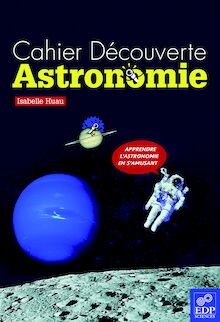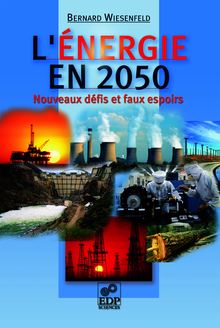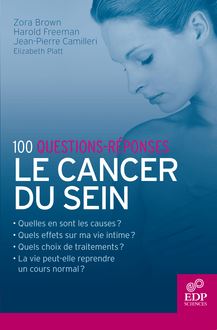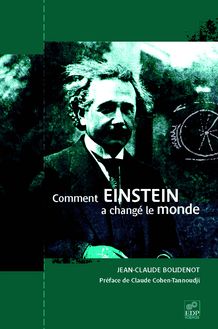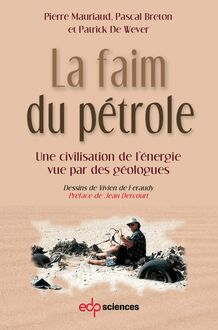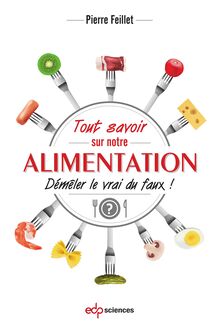Space Weather and Space Climate , livre ebook
168
pages
English
Ebooks
2024
Obtenez un accès à la bibliothèque pour le consulter en ligne En savoir plus
Découvre YouScribe et accède à tout notre catalogue !
Découvre YouScribe et accède à tout notre catalogue !
168
pages
English
Ebooks
2024
Obtenez un accès à la bibliothèque pour le consulter en ligne En savoir plus
Publié par
Date de parution
04 novembre 2024
EAN13
9782759836116
Langue
English
Poids de l'ouvrage
24 Mo
At the beginning of the 20th century, it was admitted that our atmosphere could not extend beyond a few tens of kilometers. Shortly after the midst of that same century, it was understood that the Earth is surrounded by a complex and rich plasma environment, conditioned by solar activity, extending over several tens of thousands of kilometers.
Today, we know that our planet’s boundaries extend all the way to the Sun. This book tells the long story of humanity’s efforts to understand the boundaries of the Earth and its influence from the external celestial objects dominated by our closest star, the Sun.
It also reveals the impact that solar activity is having on our technological societies, from the most beautiful to the most fearsome: Polar auroras and northern tourism, power and communications cuts, GNSS positioning degradations, planes losing contact with control towers, astronauts under threat, space... It presents, in a clear and educational way, this new and exciting discipline: space weather and space climate, its physics, its instruments, its methods, from modelling to artificial intelligence, its forecasting centres.
Written by a dozen of the world’s leading specialists in this field, this book is the tribute of the world’s largest space weather and space climate association, E-SWAN, to the lovers of space and nature.
Contents
Introduction . . . . . . . . . . . . . . . . . . . . . . . . . . . . . . . . . . . . . . . . . . . . . . . . . V
CHAPTER 1
The Age of Questioning . . . . . . . . . . . . . . . . . . . . . . . . . . . . . . . . . . . . . . . . 1
Electricity and Magnetism . . . . . . . . . . . . . . . . . . . . . . . . . . . . . . . . . . . . . . 1
The Atmosphere and the Aurora . . . . . . . . . . . . . . . . . . . . . . . . . . . . . . . . . 6
The Sun . . . . . . . . . . . . . . . . . . . . . . . . . . . . . . . . . . . . . . . . . . . . . . . . . . . . 18
The First Steps. . . . . . . . . . . . . . . . . . . . . . . . . . . . . . . . . . . . . . . . . . . . . . . 27
References . . . . . . . . . . . . . . . . . . . . . . . . . . . . . . . . . . . . . . . . . . . . . . . . . . 28
CHAPTER 2
The Time of Discoveries . . . . . . . . . . . . . . . . . . . . . . . . . . . . . . . . . . . . . . . . 29
The Sun’s Energy Problem . . . . . . . . . . . . . . . . . . . . . . . . . . . . . . . . . . . . . . 29
The Solar Corona . . . . . . . . . . . . . . . . . . . . . . . . . . . . . . . . . . . . . . . . . . . . . 30
Emergence of New Physics and a New Concept: Plasma and the Solar Wind 34
Hannes Alfvén . . . . . . . . . . . . . . . . . . . . . . . . . . . . . . . . . . . . . . . . . . . . . . . 36
Discovery of an Electrically Conductive Atmospheric Layer: The Ionosphere . 38
The Marconi Experiment . . . . . . . . . . . . . . . . . . . . . . . . . . . . . . . . . . . . . . . 40
Nomenclature for the Atmospheric and Ionospheric Layers . . . . . . . . . . . . . . 43
The First Idea on the Variable Earth’s Magnetosphere . . . . . . . . . . . . . . . . . 44
References . . . . . . . . . . . . . . . . . . . . . . . . . . . . . . . . . . . . . . . . . . . . . . . . . . 45
CHAPTER 3
The Time of Complexity: The Earth . . . . . . . . . . . . . . . . . . . . . . . . . . . . . . . 47
The Beginnings of the Space Age in Europe . . . . . . . . . . . . . . . . . . . . . . . . . 47
The International Geophysical Year . . . . . . . . . . . . . . . . . . . . . . . . . . . . . . . 49
The Hunt for the Radiation Belt. . . . . . . . . . . . . . . . . . . . . . . . . . . . . . . . . . 51
The Magnetosphere and Solar Wind are Revealed. . . . . . . . . . . . . . . . . . . . . 53
Is the Magnetosphere Closed or Open? . . . . . . . . . . . . . . . . . . . . . . . . . . . . . 55
The Dynamics of the Magnetosphere . . . . . . . . . . . . . . . . . . . . . . . . . . . . . . 56
Magnetic Reconnection . . . . . . . . . . . . . . . . . . . . . . . . . . . . . . . . . . . . . . . . . 58
Geomagnetic Storms and Magnetospheric Substorms . . . . . . . . . . . . . . . . . . 59
The South Atlantic Anomaly . . . . . . . . . . . . . . . . . . . . . . . . . . . . . . . . . . . . 60
Dynamics of the Upper Atmosphere . . . . . . . . . . . . . . . . . . . . . . . . . . . . . . . 60
Variability of the Aurora . . . . . . . . . . . . . . . . . . . . . . . . . . . . . . . . . . 61
Variability of Airglow . . . . . . . . . . . . . . . . . . . . . . . . . . . . . . . . . . . . . 62
Cosmic Rays . . . . . . . . . . . . . . . . . . . . . . . . . . . . . . . . . . . . . . . . . . . . 63
Space Instrumentation and Multi-Satellite Missions . . . . . . . . . . . . . . . . . . . 64
First Unsuccessful Launch of CLUSTER Mission . . . . . . . . . . . . . . . . . . . . . 66
Ground-Based Instrumentation . . . . . . . . . . . . . . . . . . . . . . . . . . . . . . . . . . . 68
Magnetometer Chains . . . . . . . . . . . . . . . . . . . . . . . . . . . . . . . . . . . . . 69
Incoherent Scatter Radars . . . . . . . . . . . . . . . . . . . . . . . . . . . . . . . . . 69
EISCAT 3D . . . . . . . . . . . . . . . . . . . . . . . . . . . . . . . . . . . . . . . . . . . . . . . . . 72
Coherent Scatter Radars . . . . . . . . . . . . . . . . . . . . . . . . . . . . . . . . . . . 73
Measuring the Total Electron Content . . . . . . . . . . . . . . . . . . . . . . . . 74
Optical Instruments . . . . . . . . . . . . . . . . . . . . . . . . . . . . . . . . . . . . . . 75
Neutron Monitors . . . . . . . . . . . . . . . . . . . . . . . . . . . . . . . . . . . . . . . . 76
References . . . . . . . . . . . . . . . . . . . . . . . . . . . . . . . . . . . . . . . . . . . . . . . . . . 77
CHAPTER 4
The Time of Complexity: The Sun . . . . . . . . . . . . . . . . . . . . . . . . . . . . . . . . 79
The Dynamic Sun and the Solar Wind . . . . . . . . . . . . . . . . . . . . . . . . . . . . . 79
The Solar Flare Myth . . . . . . . . . . . . . . . . . . . . . . . . . . . . . . . . . . . . . . . . . . 81
The Solar Dynamo and Solar Cycle . . . . . . . . . . . . . . . . . . . . . . . . . . . . . . . 82
We Lost SOHO! . . . . . . . . . . . . . . . . . . . . . . . . . . . . . . . . . . . . . . . . . . . . . . 85
The Solar Wind . . . . . . . . . . . . . . . . . . . . . . . . . . . . . . . . . . . . . . . . . . . . . . 88
Coronal Mass Ejections . . . . . . . . . . . . . . . . . . . . . . . . . . . . . . . . . . . . . . . . 91
Solar Flares . . . . . . . . . . . . . . . . . . . . . . . . . . . . . . . . . . . . . . . . . . . . . . . . . 95
Solar Energetic Particles . . . . . . . . . . . . . . . . . . . . . . . . . . . . . . . . . . . . . . . . 96
References . . . . . . . . . . . . . . . . . . . . . . . . . . . . . . . . . . . . . . . . . . . . . . . . . . 97
CHAPTER 5
The Time of Impacts . . . . . . . . . . . . . . . . . . . . . . . . . . . . . . . . . . . . . . . . . . 99
Description of the Impacts . . . . . . . . . . . . . . . . . . . . . . . . . . . . . . . . . . . . . . 100
The Worst Case: Should We Fear Space Weather? . . . . . . . . . . . . . . . . . . . . 116
Acknowledgements . . . . . . . . . . . . . . . . . . . . . . . . . . . . . . . . . . . . . . . . . . . . 119
CHAPTER 6
Space Weather Operations . . . . . . . . . . . . . . . . . . . . . . . . . . . . . . . . . . . . . . 121
Activity Index . . . . . . . . . . . . . . . . . . . . . . . . . . . . . . . . . . . . . . . . . . . . . . . 121
Observing the Sun from the Ground . . . . . . . . . . . . . . . . . . . . . . . . . . . . . . . 122
Observing the Sun from Space . . . . . . . . . . . . . . . . . . . . . . . . . . . . . . . . . . . 128
From Data to Forecast: The Key Role of Modelling . . . . . . . . . . . . . . . . . . . 133
Modelling to Interpret Observations or to Simulate the Unobservable . . . . . . 134
Correlation and Causality . . . . . . . . . . . . . . . . . . . . . . . . . . . . . . . . . . . . . . . 135
The Evolution of the Modelling of the Sun-Earth Interaction . . . . . . . . . . . . 137
A New Approach: Artificial Intelligence . . . . . . . . . . . . . . . . . . . . . . . . . . . . 138
At the Heart of Forecasting Models: The Data . . . . . . . . . . . . . . . . . . . . . . . 143
From Data to Forecast: The Operational Centres . . . . . . . . . . . . . . . . . . . . . 146
A New Way Forward . . . . . . . . . . . . . . . . . . . . . . . . . . . . . . . . . . . . . . . . . . 149
Bibliography . . . . . . . . . . . . . . . . . . . . . . . . . . . . . . . . . . . . . . . . . . . . . . . . . 149
Webography . . . . . . . . . . . . . . . . . . . . . . . . . . . . . . . . . . . . . . . . . . . . . . . . . 150
Conclusion . . . . . . . . . . . . . . . . . . . . . . . . . . . . . . . . . . . . . . . . . . . . . . . . . . 153
Publié par
Date de parution
04 novembre 2024
EAN13
9782759836116
Langue
English
Poids de l'ouvrage
24 Mo




